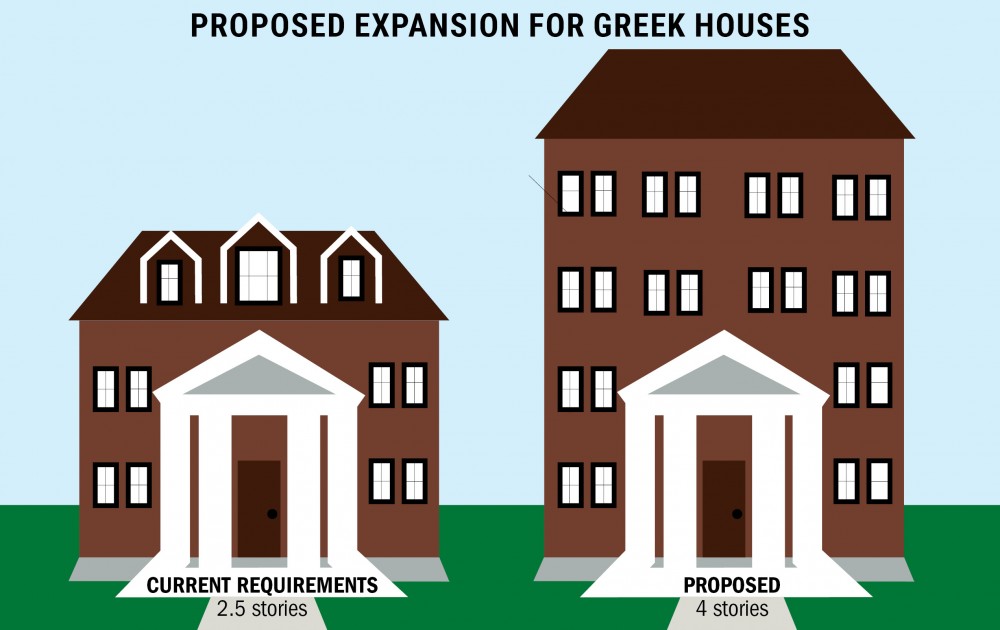As greek life membership at the University of Minnesota increases, leaders are pushing for city housing codes to relax to accommodate more members.
A proposed Minneapolis City Council ordinance could let University fraternities and sororities expand their houses.
Currently, greek houses are limited to a maximum of 32 “served” residents and can only be two and a half stories tall. The ordinance would eliminate restrictions on how many people can live in the houses and would increase the maximum height to four stories.
Additionally, the ordinance would also cut the minimum lot area from 10,000 square feet to 5,000.
“What we did was basically say, ‘OK, you can go on smaller lots and be taller,’” said Heidi Ritchie, one of Frey’s aides.
The University greek life-backed ordinance, introduced by Ward 3 City Council Member Jacob Frey, is a response to an increase in the number of students enrolled in greek life.
“The groups have grown and they need more parcels and more space,” said Doug Carlson, chair of the University District Alliance. “Most of the developments being built are for hundreds of students and these groups need to be competitive in the market.”
University greek houses have over 1000 beds for members, according to a greek life task force report presented to the Board of Regents last week.
In 2011, 6 percent of undergraduates at the University were in greek life. By 2016, that number rose to 11 percent with 17 percent of the class of 2019 involved in greek life.
“Greek membership has grown significantly in the last five years,” Ritchie said. “The existing greek housing does not accommodate the growth in membership or the number of groups.”
Frey announced his intent to introduce the ordinance in June, but the idea goes back much farther than that.
Lynn Swon, President of the Minnesota Greek Alumni Council, said Carlson started discussions at a Marcy Holmes Land Use Committee meeting in July 2015. It was later brought to Frey at the end of 2015.
The ordinance was presented to the city’s Committee of the Whole Jan. 12 and will face the planning commission on March 6, Ritchie said. A full City Council vote can come as early as March 24.
The current restrictions on greek housing are the result of a 1999 ordinance aimed at stopping communal housing, Swon said.
A lot of the terms used were vague, Ritchie said. For example, the ordinance limits “persons served” to 32, which does not distinguish between residents or people inside the house at a given time.
“The idea would be to lift what are very restrictive ordinances,” Swon said.
Ritchie said the University, he Marcy Holmes Neighborhood Association and the Southeast Como Improvement Association have supported the move.
Beyond adding stories and removing the limit on people “served,” the boundaries where fraternities and sororities can be built would be clarified.
“[Greek housing] would be in line with all other houses in the vicinity,” Frey said. “If they have usable bedrooms, they can be occupied and it increases the allowable density … that’s the biggest thing, really.”








